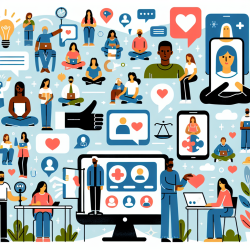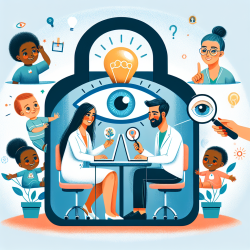Introduction
The COVID-19 pandemic has brought unprecedented challenges to mental health worldwide, particularly affecting underserved communities. A recent study titled "Utilizing social media platforms to promote mental health awareness and help seeking in underserved communities during the COVID-19 pandemic" highlights the potential of social media as a powerful tool for mental health promotion. This blog explores how practitioners can implement the study's findings to improve mental health outcomes in these communities.
The Power of Social Media in Mental Health Campaigns
The study underscores the effectiveness of social media platforms like Facebook, Instagram, and WhatsApp in reaching large audiences quickly and cost-effectively. The 5 × 5 campaign, implemented in low-income areas around Guatemala City, demonstrated significant reach, engaging over 84,000 individuals. This campaign aimed to increase mental health awareness, promote help-seeking behaviors, and provide self-care strategies.
Key Components of the 5 × 5 Campaign
- Increasing awareness and understanding of mental health symptoms.
- Providing evidence-informed self-care activities.
- Encouraging help-seeking behaviors.
- Offering information on where to find help in the community.
- Normalizing psychological distress during the pandemic.
These components were disseminated through social media, utilizing brief public service announcements (PSAs) and interactive content designed to engage and educate the community.
Implementing Social Media Strategies in Practice
Practitioners can draw from the 5 × 5 campaign's success by incorporating similar strategies in their practice:
- Utilize a Participatory Approach: Engage community stakeholders to ensure content is relevant and culturally sensitive.
- Leverage Existing Social Networks: Partner with trusted community organizations to disseminate information effectively.
- Focus on Culturally Responsive Content: Tailor messages to reflect the community's cultural values and beliefs.
- Address Real-Time Social Context: Adapt messages to current community needs and challenges.
Encouraging Further Research
While the 5 × 5 campaign provides a promising model, further research is needed to explore its long-term impact and scalability. Practitioners are encouraged to conduct studies in their communities to assess the effectiveness of social media-based mental health campaigns and adapt strategies to local contexts.
Conclusion
The study on utilizing social media for mental health awareness offers valuable insights for practitioners aiming to improve mental health outcomes in underserved communities. By adopting a data-driven approach and leveraging social media's reach, practitioners can create impactful mental health campaigns that resonate with their target audiences.
To read the original research paper, please follow this link: Utilizing social media platforms to promote mental health awareness and help seeking in underserved communities during the COVID-19 pandemic.










